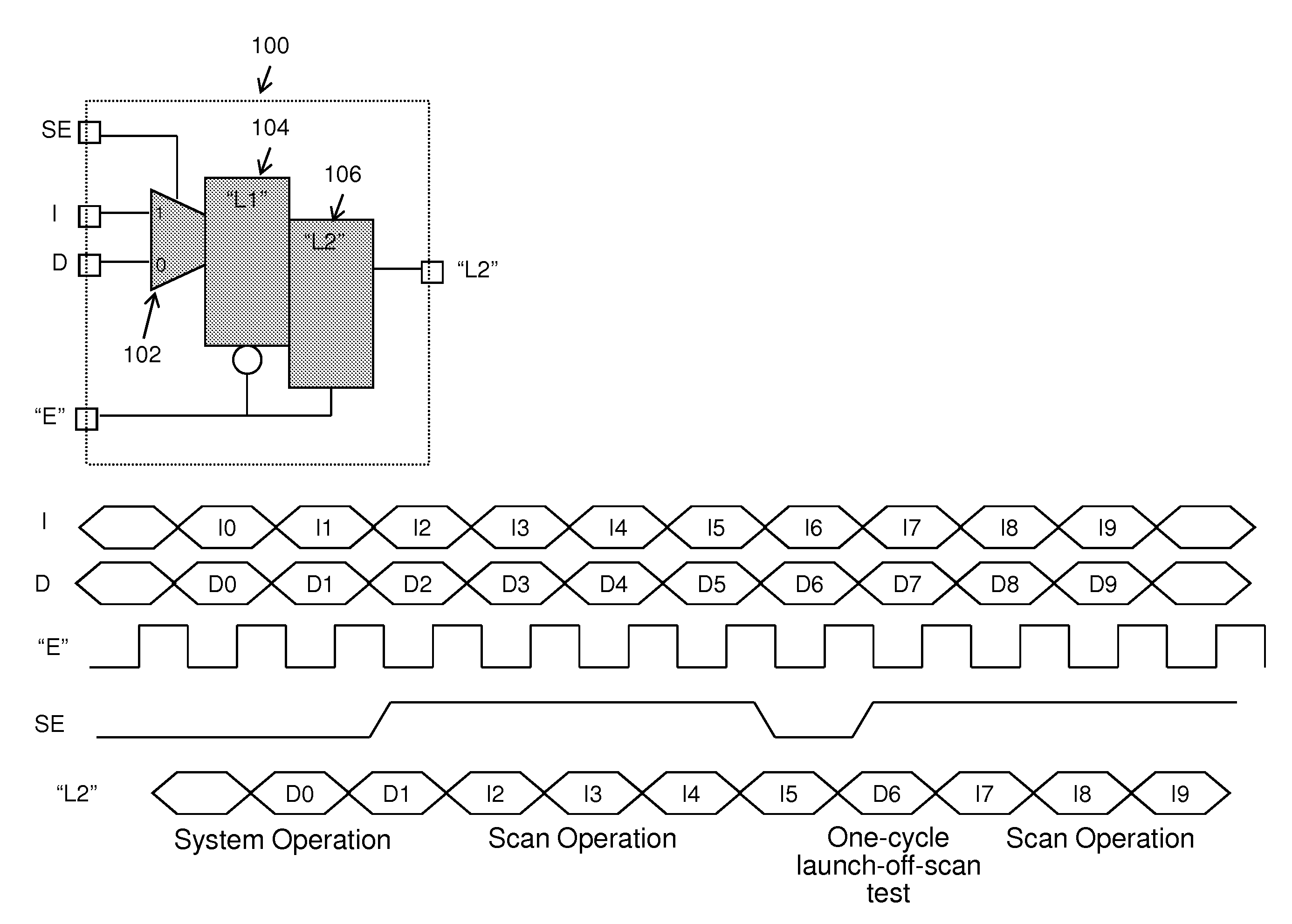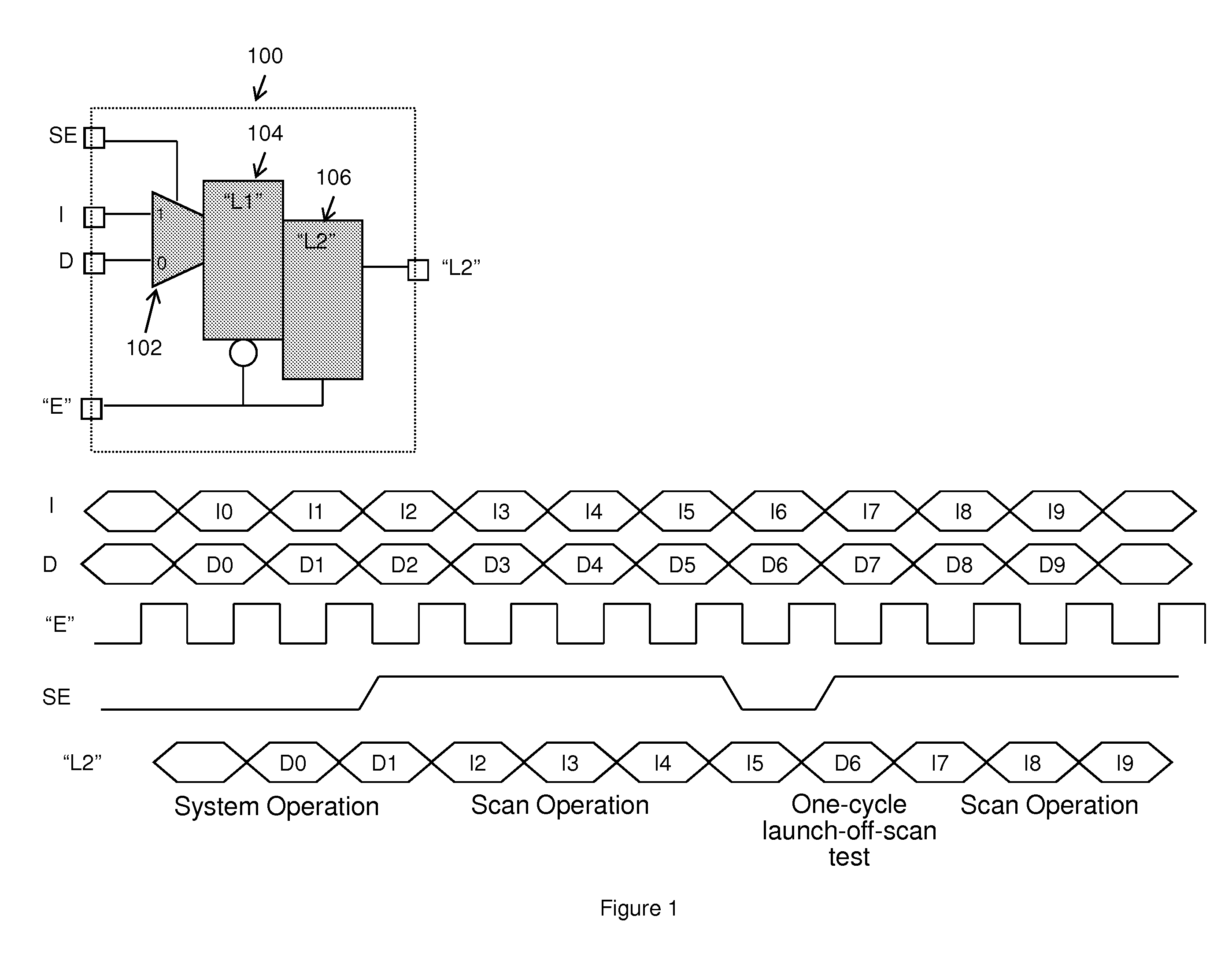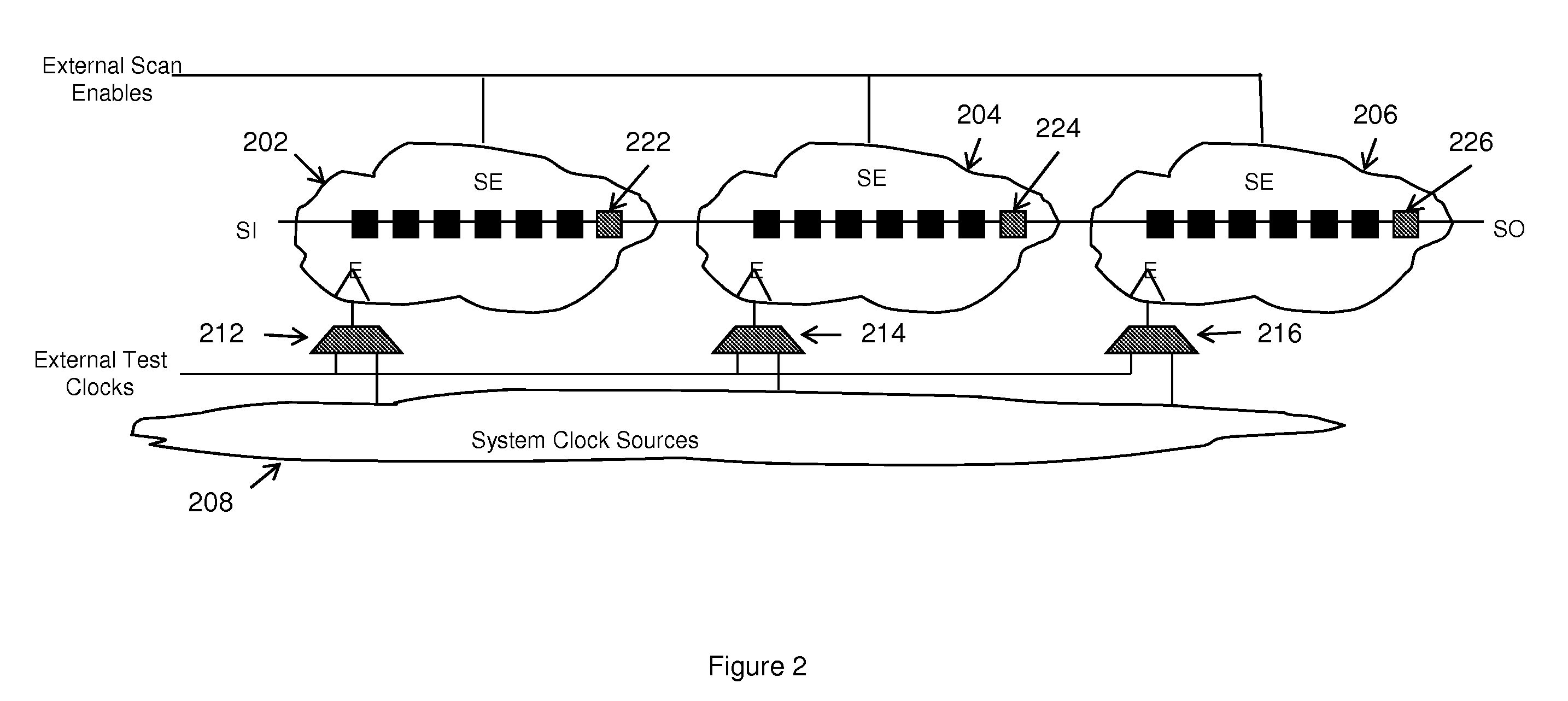Avoiding race conditions at clock domain crossings in an edge based scan design
a scanning design and clock domain technology, applied in the direction of electronic circuit testing, measurement devices, instruments, etc., can solve the problems of difficult implementation, unpredictable race conditions, and add to the time needed to design the chip
- Summary
- Abstract
- Description
- Claims
- Application Information
AI Technical Summary
Problems solved by technology
Method used
Image
Examples
Embodiment Construction
[0030]The embodiments of the invention and the various features and advantageous details thereof are explained more fully with reference to the non-limiting embodiments that are illustrated in the accompanying drawings and detailed in the following description.
[0031]As mentioned above, conventional systems have difficulty handling race conditions that can exist at clock domain boundaries. In view of the foregoing, the present embodiments separately test the timing characteristics within clock domains and timing characteristics between clock domains by selectively blocking or unblocking the inputs to clock domains.
[0032]The embodiments herein utilize controllers at the source of each clock domain. Such controllers are capable of selecting whether the test clock signal will be propagated to the domain or not. The embodiments herein utilizes two types of scan enable signal, a first scan enables signal for latches internal to clock domains, and a second scan enable signal for latches th...
PUM
 Login to View More
Login to View More Abstract
Description
Claims
Application Information
 Login to View More
Login to View More - R&D
- Intellectual Property
- Life Sciences
- Materials
- Tech Scout
- Unparalleled Data Quality
- Higher Quality Content
- 60% Fewer Hallucinations
Browse by: Latest US Patents, China's latest patents, Technical Efficacy Thesaurus, Application Domain, Technology Topic, Popular Technical Reports.
© 2025 PatSnap. All rights reserved.Legal|Privacy policy|Modern Slavery Act Transparency Statement|Sitemap|About US| Contact US: help@patsnap.com



